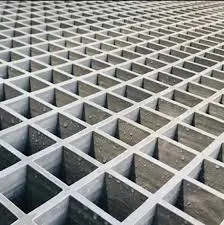
-
 Afrikaans
Afrikaans -
 Albanian
Albanian -
 Amharic
Amharic -
 Arabic
Arabic -
 Armenian
Armenian -
 Azerbaijani
Azerbaijani -
 Basque
Basque -
 Belarusian
Belarusian -
 Bengali
Bengali -
 Bosnian
Bosnian -
 Bulgarian
Bulgarian -
 Catalan
Catalan -
 Cebuano
Cebuano -
 China
China -
 China (Taiwan)
China (Taiwan) -
 Corsican
Corsican -
 Croatian
Croatian -
 Czech
Czech -
 Danish
Danish -
 Dutch
Dutch -
 English
English -
 Esperanto
Esperanto -
 Estonian
Estonian -
 Finnish
Finnish -
 French
French -
 Frisian
Frisian -
 Galician
Galician -
 Georgian
Georgian -
 German
German -
 Greek
Greek -
 Gujarati
Gujarati -
 Haitian Creole
Haitian Creole -
 hausa
hausa -
 hawaiian
hawaiian -
 Hebrew
Hebrew -
 Hindi
Hindi -
 Miao
Miao -
 Hungarian
Hungarian -
 Icelandic
Icelandic -
 igbo
igbo -
 Indonesian
Indonesian -
 irish
irish -
 Italian
Italian -
 Japanese
Japanese -
 Javanese
Javanese -
 Kannada
Kannada -
 kazakh
kazakh -
 Khmer
Khmer -
 Rwandese
Rwandese -
 Korean
Korean -
 Kurdish
Kurdish -
 Kyrgyz
Kyrgyz -
 Lao
Lao -
 Latin
Latin -
 Latvian
Latvian -
 Lithuanian
Lithuanian -
 Luxembourgish
Luxembourgish -
 Macedonian
Macedonian -
 Malgashi
Malgashi -
 Malay
Malay -
 Malayalam
Malayalam -
 Maltese
Maltese -
 Maori
Maori -
 Marathi
Marathi -
 Mongolian
Mongolian -
 Myanmar
Myanmar -
 Nepali
Nepali -
 Norwegian
Norwegian -
 Norwegian
Norwegian -
 Occitan
Occitan -
 Pashto
Pashto -
 Persian
Persian -
 Polish
Polish -
 Portuguese
Portuguese -
 Punjabi
Punjabi -
 Romanian
Romanian -
 Russian
Russian -
 Samoan
Samoan -
 Scottish Gaelic
Scottish Gaelic -
 Serbian
Serbian -
 Sesotho
Sesotho -
 Shona
Shona -
 Sindhi
Sindhi -
 Sinhala
Sinhala -
 Slovak
Slovak -
 Slovenian
Slovenian -
 Somali
Somali -
 Spanish
Spanish -
 Sundanese
Sundanese -
 Swahili
Swahili -
 Swedish
Swedish -
 Tagalog
Tagalog -
 Tajik
Tajik -
 Tamil
Tamil -
 Tatar
Tatar -
 Telugu
Telugu -
 Thai
Thai -
 Turkish
Turkish -
 Turkmen
Turkmen -
 Ukrainian
Ukrainian -
 Urdu
Urdu -
 Uighur
Uighur -
 Uzbek
Uzbek -
 Vietnamese
Vietnamese -
 Welsh
Welsh -
 Bantu
Bantu -
 Yiddish
Yiddish -
 Yoruba
Yoruba -
 Zulu
Zulu
Developing a High-Performance FRP Pipeline for Efficient Fluid Transportation
Understanding FRP Pipeline A Revolutionary Approach to Pipeline Technology
In the ever-evolving world of infrastructure and construction, the search for materials that promise durability, efficiency, and cost-effectiveness is paramount. One such innovation that has gained significant traction in recent years is the use of Fiber Reinforced Polymer (FRP) in pipeline construction. This article aims to elucidate what FRP pipelines are, their advantages, applications, and the future prospects in the industry.
What is FRP?
Fiber Reinforced Polymer (FRP) is a composite material consisting of a polymer matrix reinforced with fibers. The fibers, often made from materials such as glass, carbon, or aramid, provide the composite with enhanced mechanical properties, making it substantially stronger and more resilient than traditional materials like steel or concrete. FRP's unique characteristics—namely its lightweight, high strength-to-weight ratio, and resistance to corrosion—make it an attractive option for various applications, particularly in pipeline systems.
Advantages of FRP Pipelines
1. Corrosion Resistance One of the most significant benefits of FRP pipelines is their resistance to corrosion. Unlike traditional metal pipes that can succumb to rust and deterioration due to environmental factors, FRP pipes can withstand harsh chemicals and aggressive environments. This resistance extends their lifespan, making them a cost-effective choice in the long run.
2. Lightweight FRP materials are considerably lighter than their metal and concrete counterparts. This lightweight nature simplifies transportation and installation processes, leading to reduced labor costs and fewer logistical challenges. Additionally, the ease of handling minimizes the need for heavy machinery, further lowering operational costs.
frp pipeline

3. High Strength-to-Weight Ratio Despite being lightweight, FRP pipes maintain a remarkable strength that allows them to sustain high pressures and resist deformation. This reliability is crucial in sectors such as oil and gas, where pipeline integrity is vital for safety and efficiency.
4. Thermal Conductivity FRP materials possess excellent thermal insulating properties, making them ideal for applications requiring temperature regulation. This feature benefits industries involving the transportation of hot or cold fluids, reducing energy consumption and maintaining operational efficiency.
Applications of FRP Pipelines
FRP pipelines have found diverse applications across various sectors. In the chemical and petrochemical industries, where corrosive substances are frequently transported, FRP offers an ideal solution. Furthermore, in municipal water systems, FRP pipes are increasingly being used for their durability and longevity. They are also prevalent in offshore applications, such as seawater intake and discharge lines, due to their resistance to harsh marine environments.
Future Prospects
The future of FRP pipelines looks promising as innovations in materials science continue to develop. Ongoing research aims to enhance properties such as impact resistance and fire retardancy, making FRP even more applicable in a broader range of industries. Moreover, with the increasing emphasis on sustainability, the lightweight and durable nature of FRP pipelines aligns with global directives for eco-friendly construction practices.
In summary, FRP pipelines represent a significant advancement in pipeline technology, offering numerous benefits including corrosion resistance, reduced weight, and high strength. As industries continue to seek sustainable and efficient solutions, the adoption of FRP in pipeline systems is likely to grow, driving innovation and enhancing infrastructure resilience. The transition towards FRP pipelines symbolizes not just a technological evolution, but also a commitment to building a sustainable future.
Latest news
-
Exploring the Benefits of Top Hammer Drifter Rods for Enhanced Drilling PerformanceNewsJun.10,2025
-
High-Precision Fiberglass Winding Machine for GRP/FRP Pipe Production – Reliable & Efficient SolutionsNewsJun.10,2025
-
FRP Pipes & Fittings for Shipbuilding - Corrosion-Resistant & LightweightNewsJun.09,2025
-
Premium FRP Flooring Solutions Durable & Slip-ResistantNewsJun.09,2025
-
Premium Fiberglass Rectangular Tanks Durable & Lightweight SolutionNewsJun.09,2025
-
Tapered Drill String Design Guide Durable Performance & UsesNewsJun.09,2025









